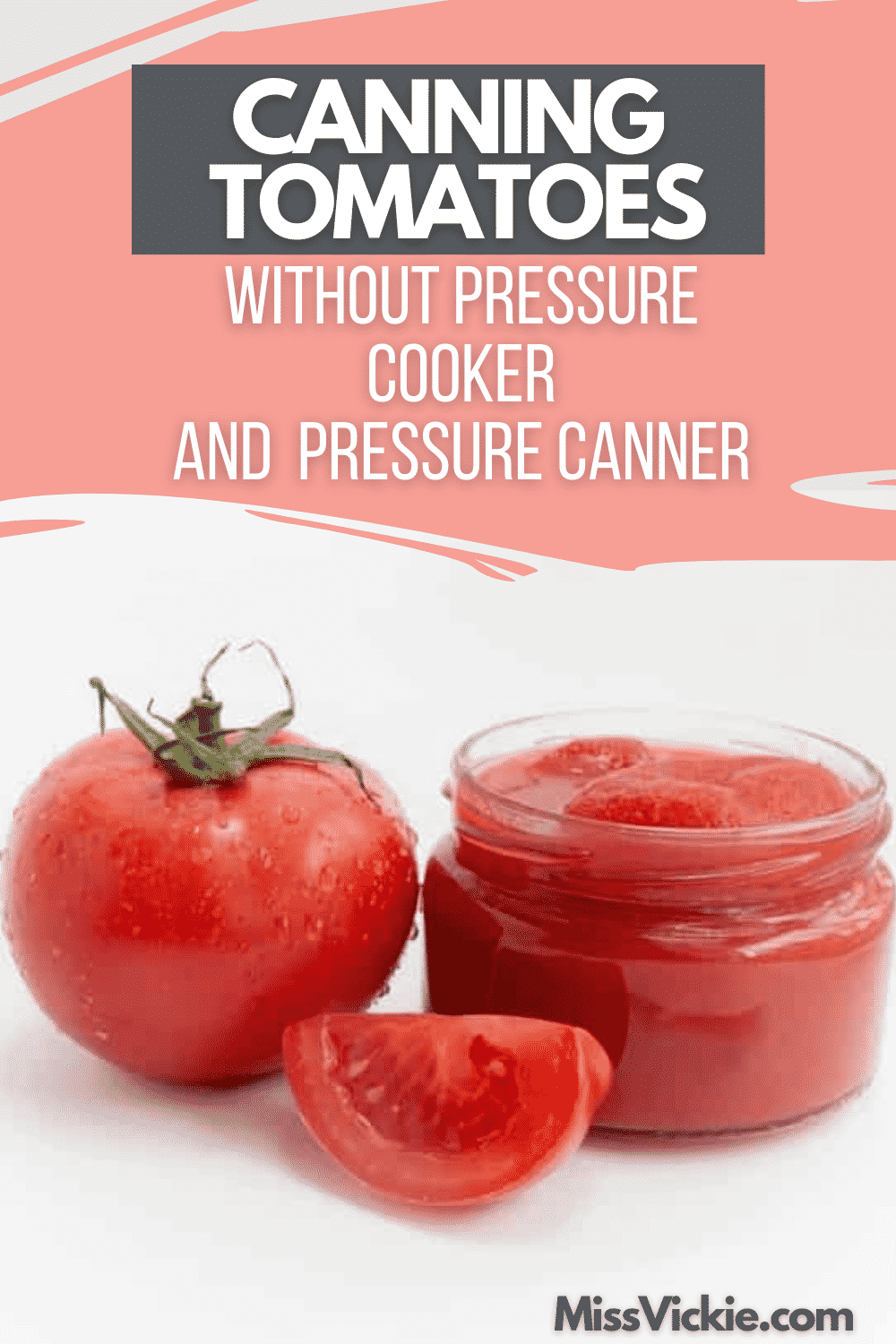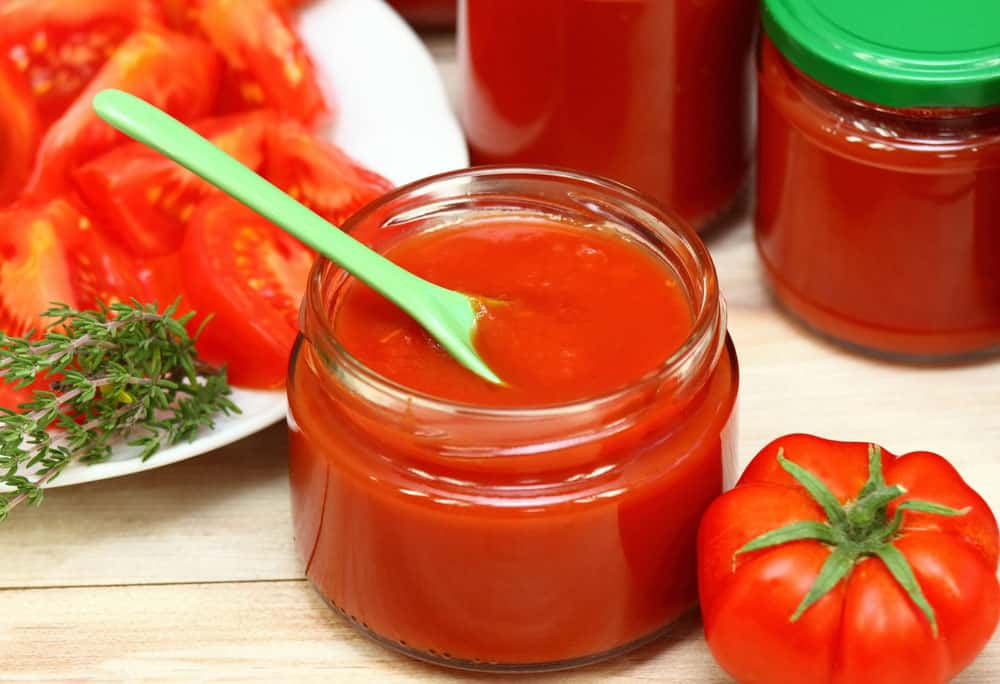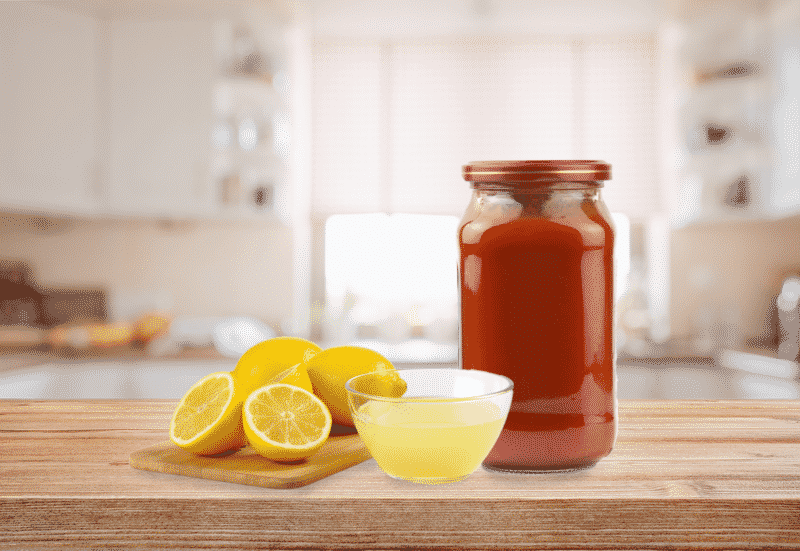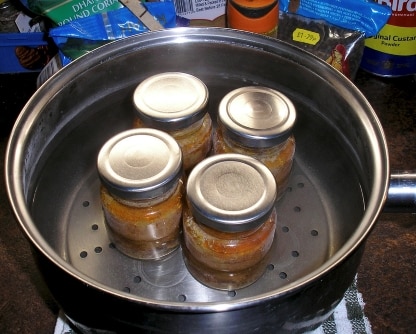
If you are thinking of canning tomatoes but you think you can’t since you don’t have a pressure cooker or a pressure canner, then you are wrong – you can still can tomatoes without them!
When canning, the important thing to consider is the food’s acidity level, or pH. This is what determines the process that must be used to preserve them.
Acidic foods (those with a pH of 4.6 or less) are safe to can in a simple water bath and it is not necessary to use a pressure cooker or pressure canner. This includes foods such as fruits and vegetables that are going to be made into pickles using vinegar.
Low-acid foods include meat, fish, pasta, and most vegetables. It is imperative that these are canned in a pressure canner or pressure cooker.
Why must high-pH foods be canned in a pressure canner?
The main reason is that dangerous Clostridium botulinum bacteria that cause food poisoning (botulism) can survive in high pH environments and can survive the temperature of boiling water (212 degrees Fahrenheit/ 100 degrees Celcius).
The spores can live and grow in a sealed jar of low-acidity food. A pressure canner or pressure cooker can raise the temperature to between 24- and 250 degrees Fahrenheit which is hot enough to destroy the bacteria and spores.
Where do tomatoes fall on the pH scale?
Tomatoes’ pH varies and it sits on the borderline of acidic and alkaline, depending on their variety and ripeness.
Tomatoes are sometimes a little higher than pH 4.6, in which case, a little vinegar, lemon juice, or citric acid must be added before canning them if you are going to use the water bath method.
Canning Tomatoes Without A Pressure Cooker And Canner (Risk-Involved)
Warning: Pressure canning is more effective to kill the botulism potential. The traditional tomatoes canning method below is NOT a scientifically approved method. Try at your own risk!
So, can you preserve tomatoes without a pressure canner?
Yes, you can preserve tomatoes without a pressure canner provided you lower the pH to below 4.6.
The addition of an acid such as vinegar allows them to reach a safe pH level for long-term storage and the cooking times at boiling temperature will ensure that no pathogens survive.
What affects the tomatoes’ acidity?
While it is not essential to know the actual pH of your tomatoes, you must use a tested canning recipe that takes into account the food particle size, food thickness, container size, and type of tomato.
Tomatoes vary in pH between 4.3 and 4.9 depending on the variety, ripeness, and growing conditions.
How to acidify tomatoes to make them safe for canning
You can use:
- Citric acid: half a teaspoon per quart of tomatoes
- Lemon juice: 2 tablespoons per quart of tomatoes
- Lime juice: 2 tablespoons per quart of tomatoes
- Vinegar (5%): 4 tablespoons per quart of tomatoes
While these additions all affect the flavor of the tomatoes slightly, it will not be that big a problem in most recipes. To balance the flavor, you can add a little sugar to taste or about an eighth of a teaspoon of liquid stevia per quart of tomatoes.
Another method: Water Bath Canning Tomatoes
In this recipe, we are making 2 pints of canned whole tomatoes, so be sure to adjust your steps accordingly if you are making a different amount. Here are the steps for you to follow when canning tomatoes without a pressure canner or a pressure cooker:
- Prepare canning jars by washing and sterilizing them.
- Boil a large pot of water.
- Fill a large bowl with iced water.
- Cut Xs into the tomatoes: Use a paring knife to score the skin of the tomatoes with Xs.
- Lower the tomatoes into the water: Carefully lower the scored tomatoes into the boiling water. Let them stay there until the tomato skin begins to loosen – no more than a couple of minutes.
- Transfer them to the iced water: Use a slotted spoon to transfer the tomatoes into the bowl of iced water for cooling. This should loosen the skin even more.
- Peel tomato skins off: Once cooled, peel off the tomato skins with your hands and discard them. Place the peeled tomatoes in a large bowl if you are going to process them whole. Chop or puree them if you are going to process them like this.
- Add lemon juice, citric acid, or vinegar to your jars: After peeling the tomatoes, add lemon juice or citric acid evenly into the jars and add salt if preferred.
- Scoop tomatoes into jars: Gently press the tomatoes into the jars until there is just ½ inch of headspace left. To remove any air bubbles air, use a knife and slide it in and out of the jar.
- Set a rack at the bottom of a large stockpot: Put the jars in the pot on the rack. They should not touch one another. Fill the pot with water. The jars should be covered over their lids by 2 inches or more.
- Bring the water to a boil over a high flame. Cover the pot with its lid, turn the flame down and simmer everything for 85 minutes.
- Turn the flame off and leave everything to cool.
- Remove the jars, making sure the lids have “popped” and formed a good seal.
- Dry the jars and label them.
- Store in a cool, dry place.
Word of Caution
As you can see, it is possible to can tomatoes without a pressure cooker or pressure canner using the water bath method. Once again though, we would advise you not to use this method. Also, please note the following:
- Please don’t use ascorbic acid (vitamin C) instead of the acidic ingredients recommended above. It is often mixed with other ingredients and may not be acidic enough for canning purposes. Plus, ascorbic acid is destroyed by heat.
- It is a myth that heirloom tomatoes are more acidic than new hybrids.
- While correct acidification ensures safety from botulism, it does not destroy salmonella and listeria. This is why pressure processing is highly recommended to be safe from these as well.
- Correct acidification must go together with correct processing. If jars aren’t properly processed, mold spores can survive. These raise the pH of the tomatoes, even if they were correctly acidified to start with. Then, the botulism spores become active and release their toxins.



